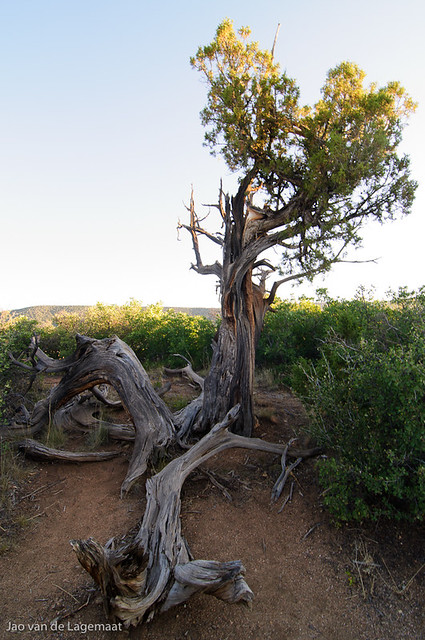Last sunday, I went hiking with my daughter in the Wild Basin area of RMNP. It was cloudy and overcast, so we went for late afternoon with the hope of photographing a few waterfalls and perhaps a lake with some clouds. The strategy for the Wild Basin trailhead as is true for many others in RMNP is to either come extremely early (i.e. 4 am or earlier) or later in the afternoon (>3pm), otherwise you'll have to walk quite a ways along the very boring road. We parked right next to the ranger station. We did not make it all the way to the lakes (Ouzel and Blue Bird) we were aiming for because not far before Ouzel falls we got in a major thunderstorm right above our heads and were pelted with heavy rain. Thunderstorms like this are the disadvantage of starting late and make it a very questionable idea to go up above treeline. So we turned around and photographed Calypso Cascades and the many nice waterfalls in Ouzel Creek in between heavy periods of rain. I am always proud of my 9-year old for not complaining about the rain and generally just having fun even when wet.
Calypso

Mosaic of 9 images for high resolution stitch. Individual images D300, ISO 200, Nikon 18-55mm at 34mm, f/22, 0.5s.
Buy a print.
Misty

Mosaic of 9 images for high resolution stitch. Individual images D300, ISO 200, Nikon 18-55mm at 34mm, f/22, 1.6s.
Buy a print.
The mist in this image is caused by the higher parts of the waterfall and of course the rain.
Casualty

Mosaic of 9 images for high resolution stitch. Individual images D300, ISO 200, Nikon 18-55mm at 34mm, f/22, 1.0s.
Buy a print.
This is the view from the bridge over the cascades. They are really quite impressive. There are not many flowers out yet which is quite surprising to me but probably owes to the long wet spring we had.
Unnamed Falls in Ouzel Creek panorama.
This really should be seen large.

Mosaic of 10 images (five columns of two) for high resolution stitch. Individual images D300, ISO 200, Nikon 18-55mm at 34mm, f/16, 1/4s.
Buy a print.
The flow.
Should be seen large for full effect.

Crop of above image and different treatment.
Buy a print.
There are a few more interesting images in the
smugmug gallery. You can also check out a subset on flickr.
They are also on Google+/Picasa. Enjoy!
Edit: Mariska noticed a very funny error in the post where I had replaced am with pm making it sound like it is hard for me to get out of bed before 4 pm. Of course am makes a lot more sense there.






















